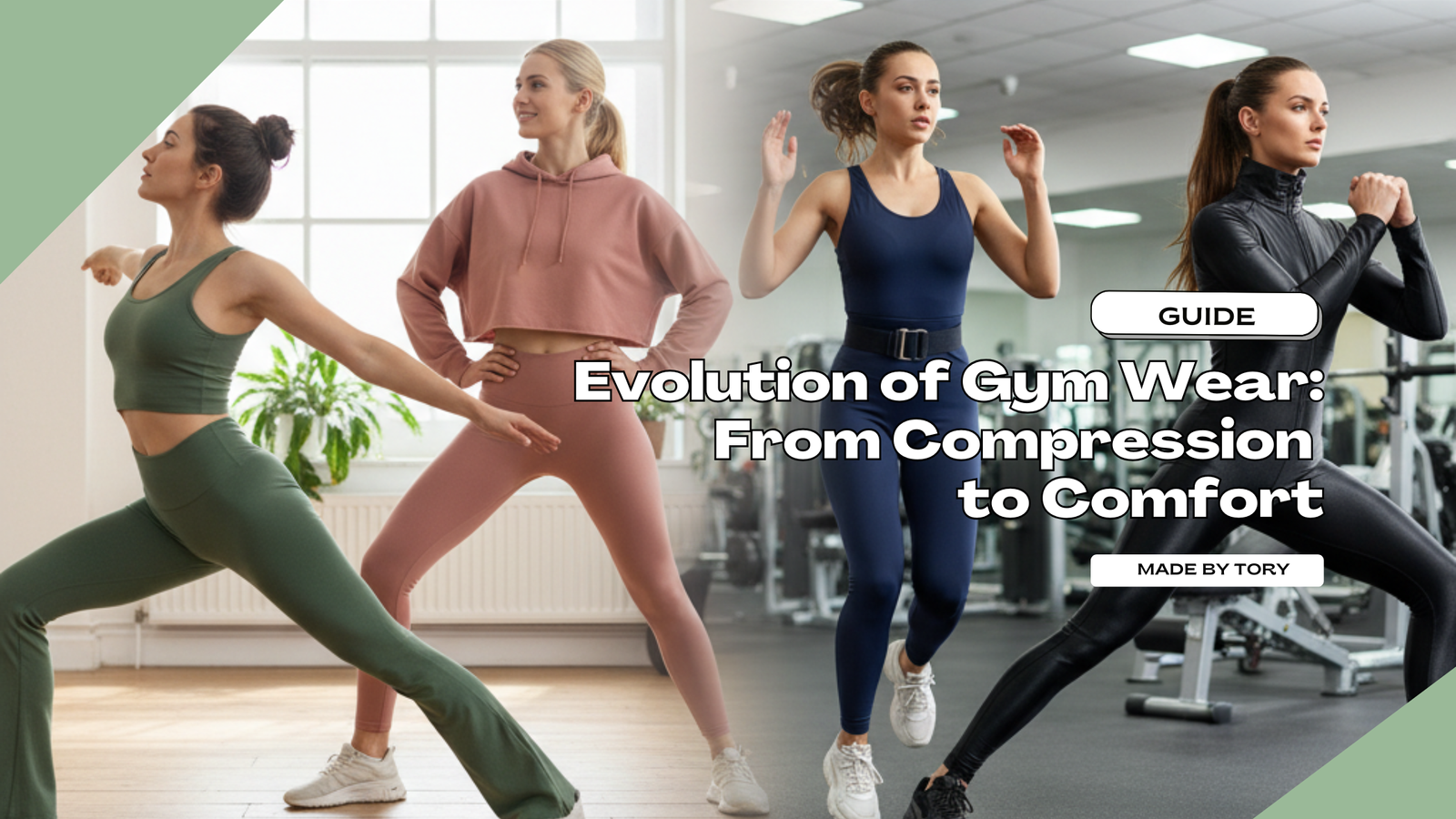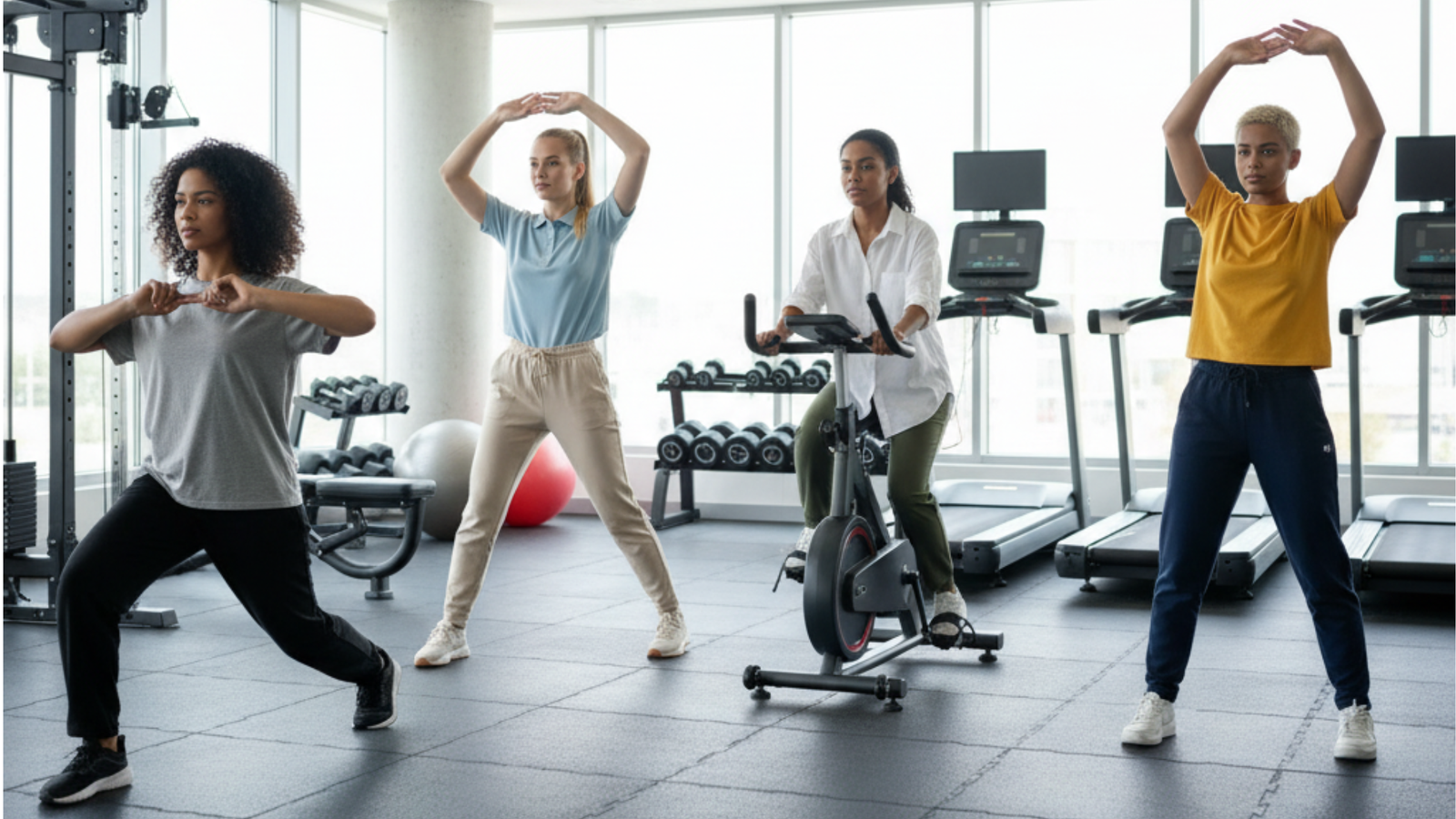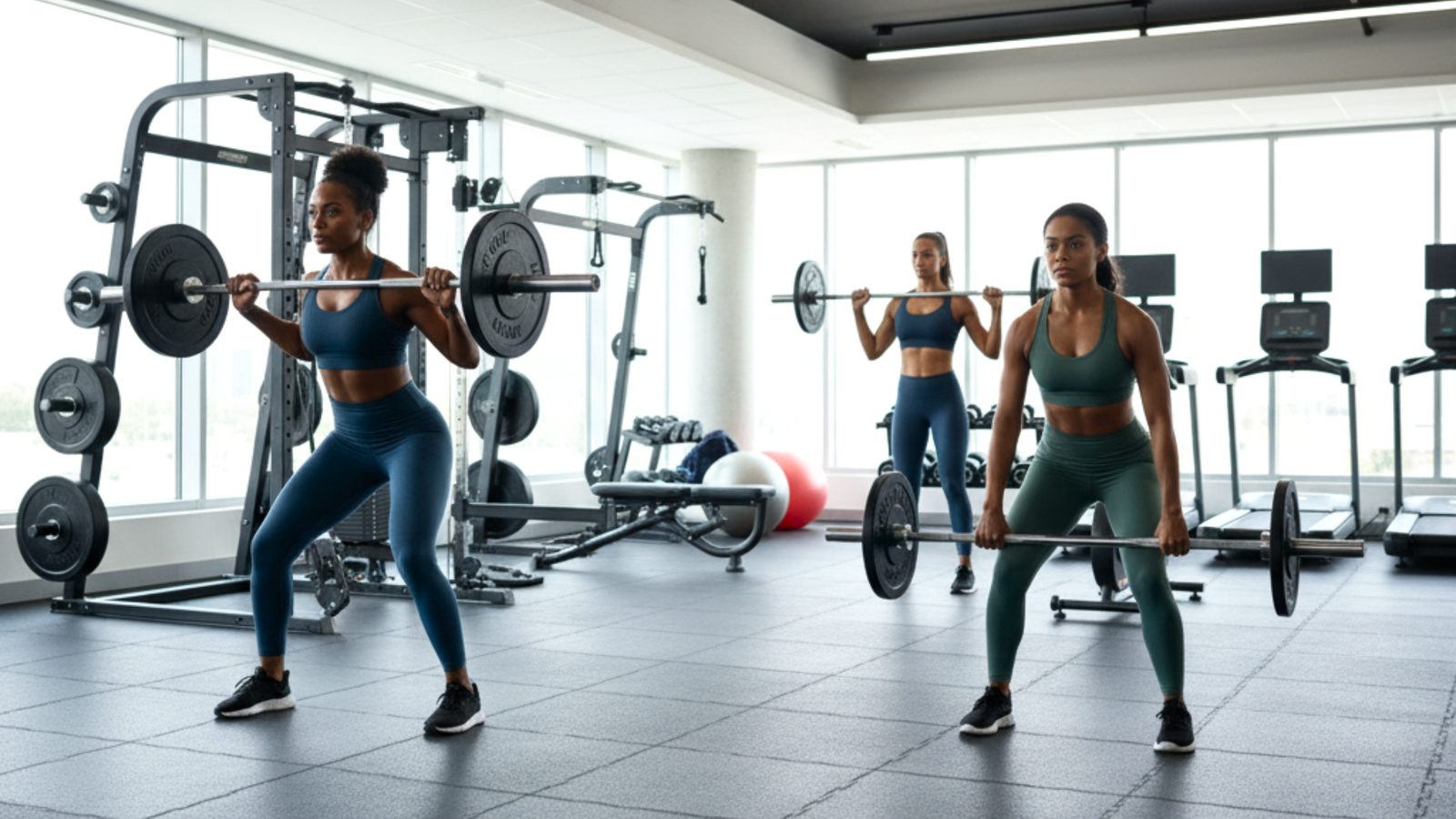Blog
The Evolution of Gym Wear: From Compression to Comfort

The evolution of gym wear isn’t the latest news, but it is something that is constantly in the news. Lifestyles have changed in the past few decades; therefore, how people exercise and perform has a huge influence on the preference for gym wear.
In the past, a simple t-shirt and shorts may have been enough for many. Now, most gym goers demand high-performance attire with advanced tech.
So, how has gym wear changed over time, and what do the latest trends in activewear tell us about the future of fitness fashion?
How Gym Wear Has Changed Over Time
A century of invention, societal shifts, and emerging fitness fads are all reflected in the evolution of gym attire. Every decade from the early 1900s to 2025 has had an impact on how fitness enthusiasts and athletes dress for competition.
1. Early Gym Wear (1900s–1960s)
This era focused on simplicity and modesty, where function outweighed fashion. Gym wear was designed for basic movement rather than performance or style.
- Simple and functional, gym attire was typically composed of cotton or wool.
- Women wore modest gym dresses or skirts, and men wore simple shorts and vests.
- Tradition and modesty took precedence over comfort and adaptability.

2. The Fitness Boom (1970s–1980s)
As fitness became a pop culture phenomenon, gym wear turned bold, colorful, and expressive. This was the era when fashion truly entered the fitness scene.
- Gym attire became more vibrant and expressive with the popularity of aerobics and at-home workout videos.
- For their stretch and style, nylon, spandex, and Lycra fabrics became more and more popular.
- Neon leggings, headbands, and leotards became emblems of fitness culture.
3. The Performance Era (1990s–2000s)
Technology and performance science began shaping gym wear, with brands focusing on functionality and athletic efficiency. Comfort and compression became the core debate.
- The design of gym wear started to be influenced by sports science.
- As athletes focused on performance, the argument over compression vs comfort gym wear arose.
- Compression gear was said to improve blood flow, lessen fatigue, and hasten the healing process.
- Sweat and temperature were controlled with the advent of moisture-wicking textiles.
4. The Comfort Revolution (2010s–Present)
Fitness fashion evolved into a lifestyle statement, merging comfort with confidence. Modern gym wear now reflects sustainability, diversity, and everyday wearability.
- With the rise of yoga, pilates, and low-impact training, fitness became more comprehensive.
- By emphasizing soft, stretchable, and breathable textiles, gym activewear transformed the market.
- People can now effortlessly transition from working out to the street thanks to athleisure, which blurred the boundaries between casual and gym attire.
- In contemporary activewear design, comfort, sustainability, and inclusivity have taken center stage.
Nowadays, gym attire is more about how your clothes reflect your lifestyle, attitude, and self-confidence than what you wear to work out.

The Role of Color and Style in Modern Activewear
In addition to being performance-driven, contemporary gym attire has a strong psychological component. Color psychology in activewear is essential for affecting motivation, energy, and mood.
- Red and Orange: Boost motivation, vigor, and resolve, perfect for strenuous exercise.
- Blue and Green: Encourage focus and serenity, making it ideal for yoga or meditation.
- Black: represents strength and refinement; it’s frequently used as a color in gym sets and gym tops.
- Pastels and Neutrals: Exude balance, comfort, and a contemporary, minimalist look.
Fitness enthusiasts today often choose coordinated workout gym shorts and tops, or matching gym sets, which not only look good together but also inspire them to work harder.
People are empowered to express their personalities through their choice of gym attire when psychology and style are combined.
Comfort Meets Technology: The New Standard
The evolution of gym wear enters a new phase in the 2020s, where comfort and technology combine to improve performance. Smart materials and careful design are now incorporated into workout clothes to support every movement.
Key Advancements in Modern Gym Wear:
- Moisture-Wicking Fabrics: These fabrics keep the body dry and cool by pulling perspiration away from the skin.
- Four-Way Stretch Materials: During dynamic exercises, increase your range of motion and flexibility.
- Seamless Construction: prevents skin irritation and lessens friction.
- Breathable Panels: Increase airflow and ventilation when working out vigorously.
- Eco-Friendly Materials: Organic cotton, bamboo fiber, and recycled polyester all support sustainability.
In order to make fitness fashion accessible to everyone, brands are embracing gender-neutral collections, inclusive sizing, and adaptive designs as gym wear trends 2025 evolve.
Common Gym Wear Mistakes to Avoid
Despite the vast array of options, many people continue to make mistakes when it comes to gym attire that affect their comfort and performance. Your workouts may change significantly if you stay away from these.
- Wearing Non-Breathable Fabrics: Select technical fabrics that have the ability to wick away moisture.
- Ignoring Proper Fit: Before purchasing new leggings or gym sets, always try them on to ensure the fit is right.
- Neglecting Supportive Gear: Performance is improved and strain is avoided with proper support.
- Overlooking Durability and Fabric Quality: For extended wear, look for high-quality stitching and reinforced seams.
- Not Considering Functionality: Smart gym attire blends functionality and style.
Conclusion
The evolution of gym wear from compression to comfort reflects how fitness and fashion have evolved together. Today, performance, technology, and sustainability define modern activewear, offering both style and practicality.
Whether you’re looking to buy gym leggings in Dubai or explore the latest comfort gym wear collections, it’s all about clothing that moves with you and supports your confidence.
At Made by Tory, every piece is designed with premium fabrics, advanced stretch technology, and breathable materials to deliver performance-driven comfort for every body type.
Fitness fashion has truly become a lifestyle — stylish, inclusive, and made to perform.
FAQs
1. What is the evolution of gym wear from compression to comfort?
The evolution of gym wear has shifted from tight, performance-focused compression fabrics to softer, breathable materials emphasizing comfort and flexibility. Today, it blends functionality with lifestyle appeal for modern fitness enthusiasts.
2. How have modern gym wear trends changed over time?
Modern gym wear trends have moved toward inclusive, gender-neutral, and sustainable designs featuring smart fabrics and seamless construction. Moisture-wicking technology now allows effortless transitions from workout sessions to everyday fashion wear.
3. What are the key differences between compression and comfort gym wear?
Compression gym wear supports muscles and boosts performance through a tight fit and pressure. In contrast, comfort gym wear focuses on breathability, stretch, and relaxed designs that enhance movement and everyday comfort.
